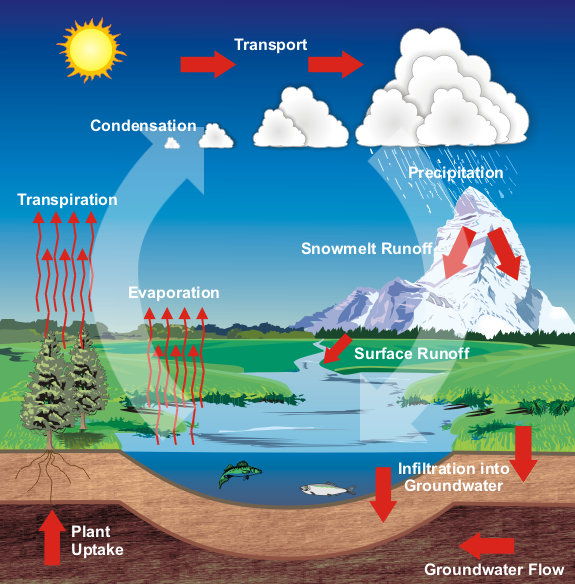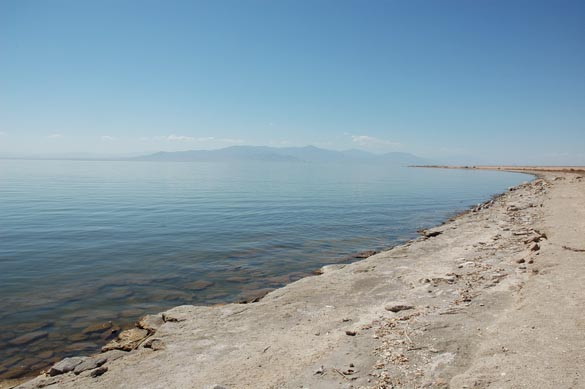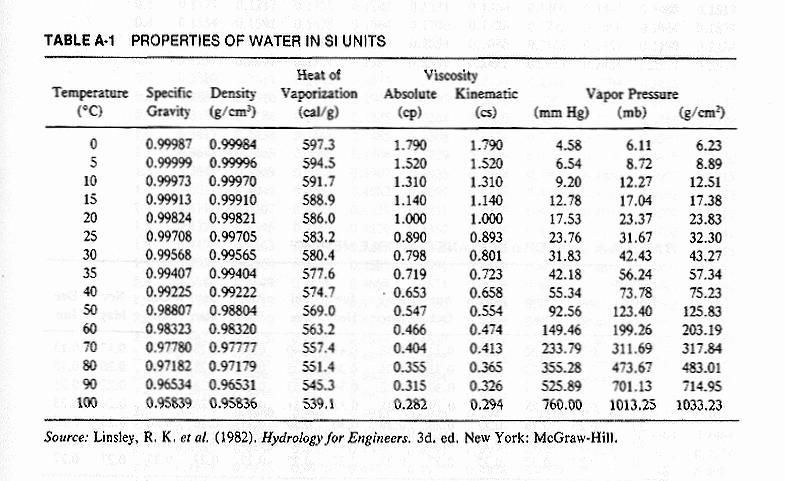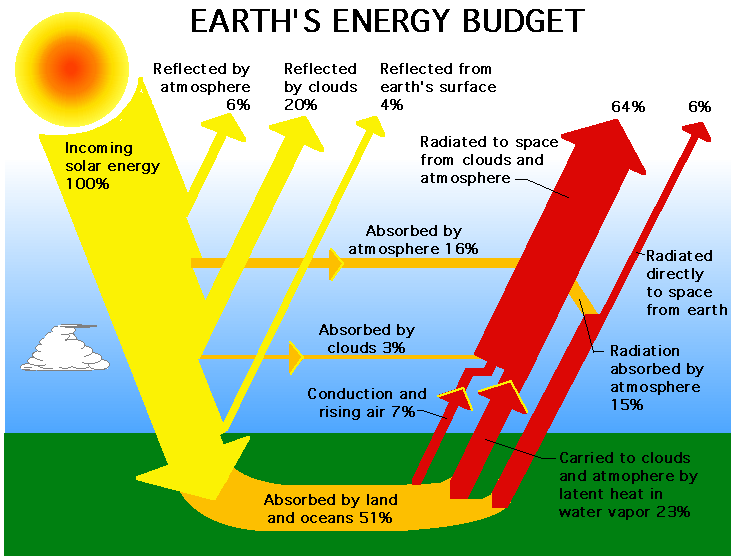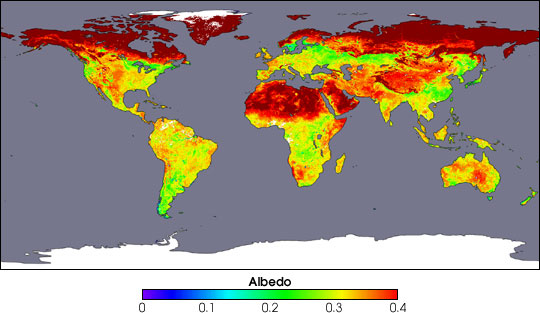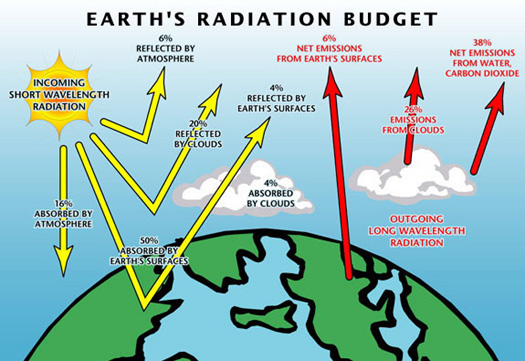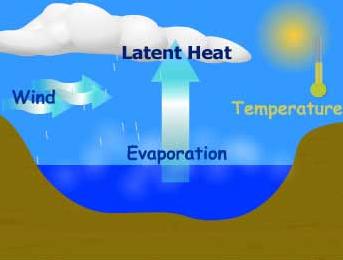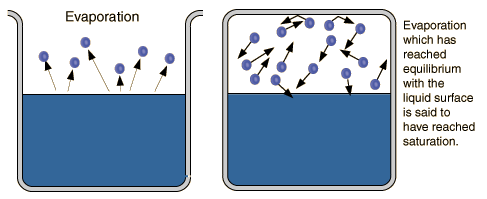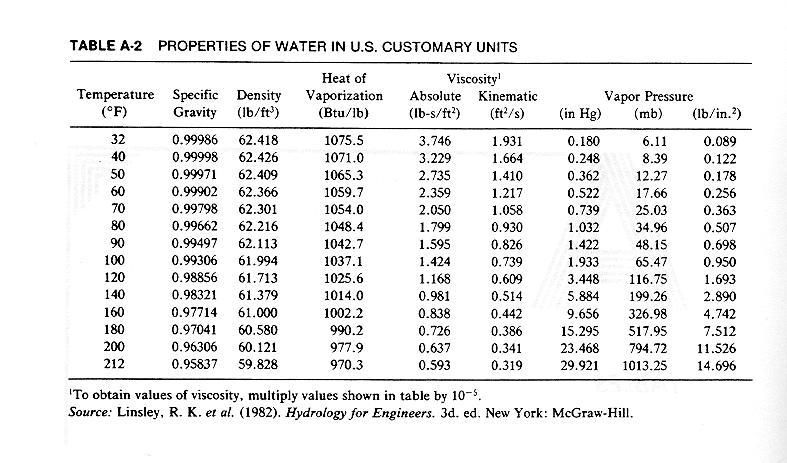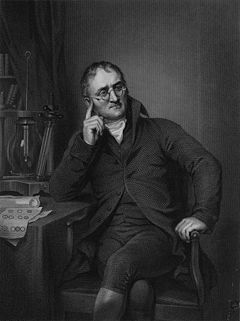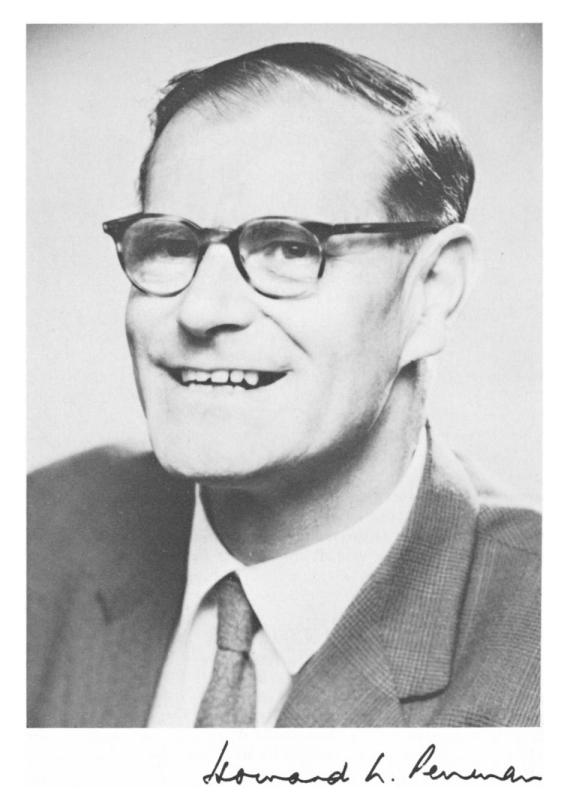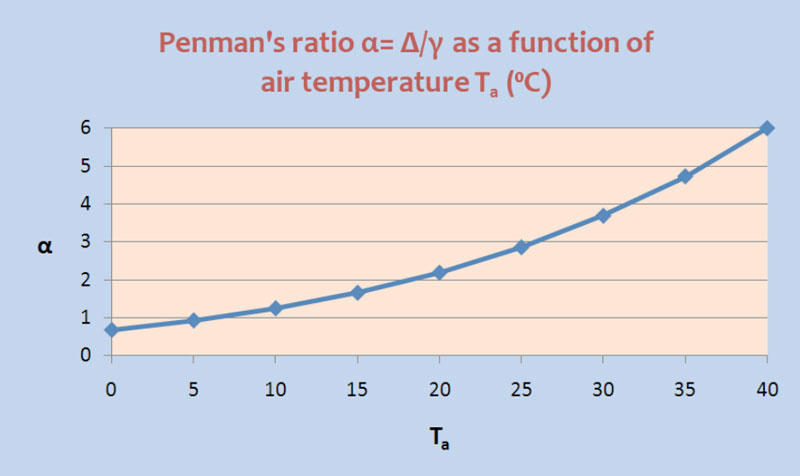|
ENGINEERING HYDROLOGY 023 : EVAPORATION
1.01 1.02
1.03 1.04 • Net solar radiation • Saturation vapor pressure • Vapor pressure of the overlying air • Air and water temperatures • Wind velocity • Atmospheric pressure 1.05 1.06 Annual evaporation rates can be as low as 500 mm and as high as 3000 to 3500 mm. 1.07 In the United States, annual evaporation rates vary from 500 mm or 20 inches in Maine to 2200 mm or 86 inches in Arizona. 1.08
Salton Sea at Bombay Beach, California. 1.09 The methods for determining evaporation classify into: • Water-budget method • Energy-budget method • Mass-transfer methods 2. WATER-BUDGET METHOD 2.01 2.02 • E is the volume evaporated from the reservoir • P is the precipitation falling directly into the reservoir • Q is the surface runoff inflow into the reservoir • O is the outflow from the reservoir • I is the net infiltration from the reservoir into the ground • ΔS is the change in stored volume. 2.03
2.04 Precipitation P is readily measured. 2.05 Inflow Q and outflow O can be obtained by integrating flow records. 2.06 Net infiltration I can be evaluated indirectly, by monitoring changes in groundwater level in nearby wells. 2.07 The change in stored volume ΔS is determined by means of water stage recorders. 3. ENERGY-BUDGET METHOD 3.01 3.02 The heat of vaporization, that is, the amount of heat required to convert one gram of water into vapor, varies with the temperature.
3.03 At 20oC, the heat of vaporization is equal to 568 calories. 3.04 Heat must be supplied for evaporation to take place. 3.05 Radiation is the emission of energy in the form of electromagnetic waves. 3.06 Solar radiation received at the Earth's surface is a major component of the energy balance. 3.07 Solar radiation reaches the outer surface of the atmosphere at a nearly constant flux of 1.94 cal/cm2/min. 3.08
3.09 Nearly all of this radiation is of wavelengths in the range 0.3-3.0 micrometers, with about half in the visible range, between 0.4 and 0.7 micrometers. 3.10
3.11 The Earth also emits radiation, but this terrestrial radiation is of much lower intensity and greater wavelength than solar radiation. 3.12 3.13 It is customary to refer to solar radiation as short-wave radiation, and to terrestrial radiation as long-wave radiation. 3.14 The fraction of original solar radiation that reaches the Earth's surface is called direct solar radiation. 3.15 The fraction that reaches the ground after reflection and scattering is called sky radiation. 3.16 The sum of direct solar and sky radiation is called global radiation. 3.17 Albedo is the reflectivity coefficient of a surface toward shortwave radiation. 3.18 Albedo varies with color, roughness, and inclination of the surface. 3.19 Values of albedo range from 0.03-0.10 for water, 0.10-0.30 for vegetated areas, 0.05-0.40 for bare soil, 0.30-0.60 for sand dunes, and 0.50-0.95 for snow-covered areas. 3.20
3.21 In addition to short wave radiation, there is also long-wave radiation. 3.22 The Earth emits long-wave radiation, part of which is absorbed and reflected back by the atmosphere. 3.23
3.24 The difference between outgoing and incoming fluxes is called long-wave radiation loss. 3.25 At night, long-wave radiation predominates. 3.26 Net radiation is equal to the net short-wave radiation minus the long-wave radiation loss. 3.27 3.28
3.29 • Qs is the global radiation • A is the albedo • Qb is the long-wave radiation loss • Qa is the energy advected into the waterbody by streams, rain, snow, etc. • Qh is the sensible heat transfer from waterbody to atmosphere by convection and conduction • Qe is the evaporative or latent heat transfer • Qt is the increase in energy stored in the water body 3.30 3.31
3.32
3.33 3.34 3.35
3.36
• Ts is the water surface temperature, in degree Celsius • Ta is the overlying air temperature, in degree Celsius • es is the saturation vapor pressure at the water surface temperature, in millibars • ea is the partial vapor pressure of the overlying air, in millibars • p is the atmospheric pressure, in millibars. • 1000 is a constant in millibars. 3.37 3.38
3.39 • Qe is the evaporative heat in cal/cm2/day, • rho is the density of water in gr/cm3, • lambda is the heat of vaporization in cal/gr, and • E is the evaporation rate in cm/day.
3.40 3.41
3.42
3.43 3.44 4. MASS-TRANSFER METHODS 4.01 Evaporation rates are dependent on the temperature of the water surface and the prevailing atmospheric pressure. 4.02 Higher water temperatures result in higher evaporation rates. 4.03 Higher atmospheric pressure results in lower evaporation rates. 4.04 Temperature has a larger effect on evaporation than atmospheric pressure. 4.05 Evaporation rates are a function of the difference between the saturation vapor pressure at the water surface temperature es and the partial vapor pressure of the overlying air ea. 4.06 The saturation vapor pressure is the equilibrium vapor pressure in a closed container. 4.07 The partial vapor pressure is the nonsaturation vapor pressure in an open container. 4.08
4.09 The saturation vapor pressure is a function of temperature. 4.10
4.11 The partial vapor pressure of the air ea can be obtained by multiplying the saturation vapor pressure at the overlying air temperature eo by the relative humidity of the air φ in percentage, and dividing by 100.
4.12
4.13 As the process of mass transfer continues, the lowest layer of the atmosphere eventually becomes saturated, and net evaporation reduces to zero and can become negative, that is, it can condensate. 4.14 The wind carries away water molecules and helps continuous evaporation. 4.15 The Dalton formula for evaporation considers the vapor pressure difference and wind effects. 4.16
4.17 (es - ea) is the vapor pressure difference. 4.18 4.19
4.20 The Dalton formula can also be expressed in terms of eo, the saturation vapor pressure at the air temperature, instead of es, at the water surface temperature. 4.21
4.22 4.23 In terms of saturation vapor pressure at the overlying air temperature eo and percent relative humidity φ, the Dalton formula is 4.24
5.01 5.02 5.03 5.04
5.05 5.06
5.07 5.08
5.09 5.10
5.11 in which En is the net radiation in evaporation rate units, and E is the evaporation rate. 5.12 5.13 5.14
5.15 5.16
5.17 5.18
5.19 5.20
5.21 5.22
5.23
5.24
5.25 5.26
Narrator: Dr. Victor M. Ponce Music: Fernando Oñate Editor: Flor Pérez Photo Credits: Google
Copyright © 2010 Visualab Productions All rights reserved
|
